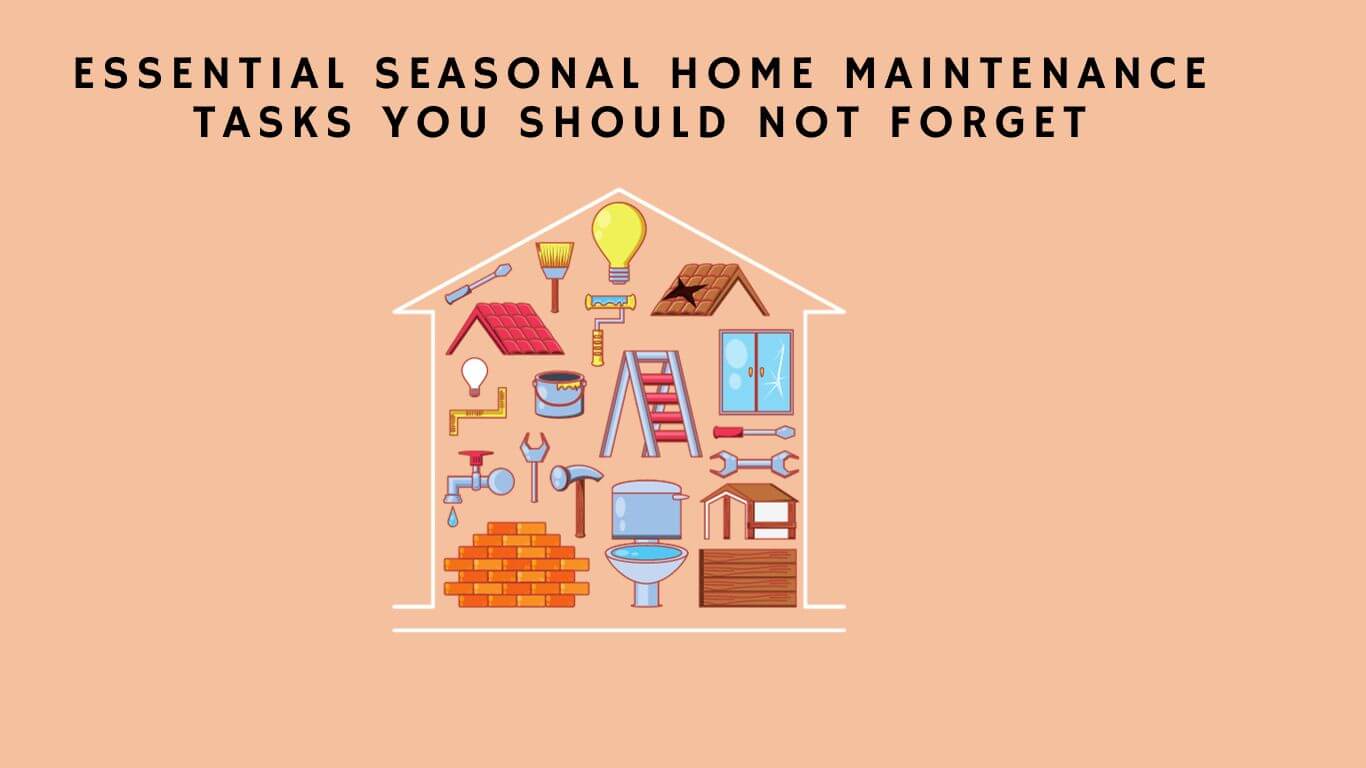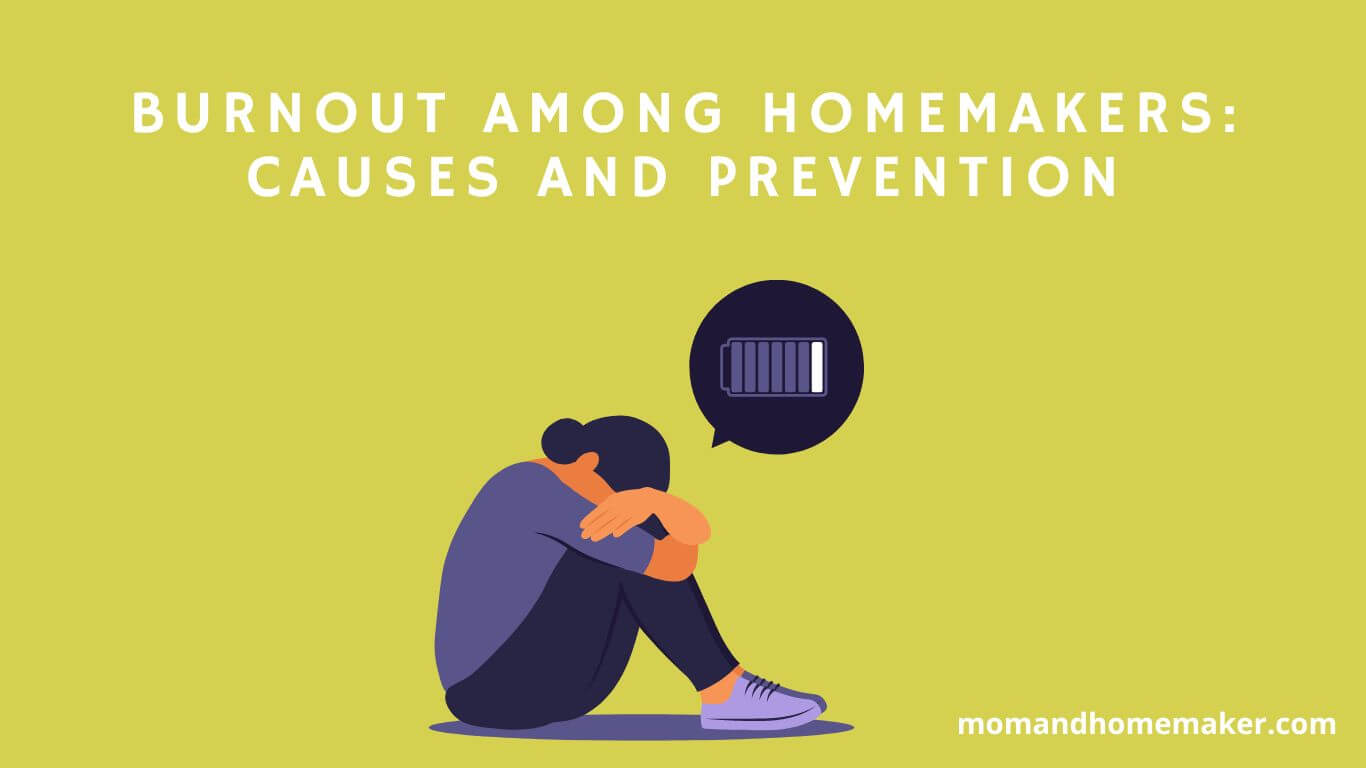Don’t forget the essential seasonal home maintenance tasks that will keep your house in top shape. Did you know that neglecting these tasks can lead to costly repairs down the line?
Take control and protect your investment by cleaning gutters, inspecting the roof, checking HVAC filters, testing detectors, and more. This article will guide you through these tasks, ensuring your home is ready for any season.
Picture this: It’s a chilly winter morning, and as you sip on your steaming coffee, you notice an ominous drip-drip sound coming from above. You look up to see water slowly seeping through your ceiling – talk about starting the day off on the wrong foot.
Don’t let this nightmare become your reality. By tackling some essential seasonal home maintenance tasks now, you can save yourself from unexpected disasters later. From prepping your heating system to protecting against ice dams, we’ve got all the tips and tricks you need to ensure a stress-free winter in your humble abode.
Clean Gutters and Downspouts
Clean your gutters and downspouts regularly to ensure proper drainage and prevent water damage. Gutter maintenance is an essential task that shouldn’t be overlooked. Over time, leaves, debris, and dirt can accumulate in your gutters, causing clogs and inhibiting the flow of water. By regularly cleaning your gutters, you can prevent potential water damage to your home’s foundation, walls, and landscaping.
Start by inspecting your gutters for any visible signs of damage such as cracks, holes, or sagging. If you notice any issues, it’s important to address them promptly to prevent further damage.
Remove any debris from the gutters by hand or using a scoop. Be sure to wear gloves to protect your hands. Once the gutters are clear, use a hose to flush out any remaining dirt and ensure proper water flow.
Apart from cleaning your gutters, it’s equally important to inspect and clean your downspouts. Downspout cleaning is crucial as clogs can cause water to overflow and damage the foundation of your home. Use a plumber’s snake or a high-pressure hose to clear any clogs in the downspouts.
If you notice any significant damage during the cleaning process, it’s recommended to contact a professional for gutter repair. Regular gutter inspection and maintenance will help prevent costly repairs and ensure the longevity of your gutters and downspouts. So, make it a part of your seasonal home maintenance routine to clean and inspect your gutters and downspouts regularly.
Inspect and Repair Roof
Don’t overlook the importance of regularly inspecting and repairing your roof. Your roof is a crucial component of your home’s structure, protecting you and your belongings from the elements. Neglecting roof maintenance can lead to costly repairs and potential safety hazards.
Here are three essential roof maintenance tasks to keep in mind:
- Roof Inspection: Schedule regular roof inspections by a professional roofing contractor. They’ll thoroughly assess your roof for any signs of damage, such as missing or cracked shingles, leaks, or sagging. Early detection of roofing issues can prevent further damage and save you money in the long run.
- Roof Repairs: Address any roofing issues promptly. Whether it’s replacing damaged shingles, fixing leaks, or reinforcing weak areas, timely repairs will prevent small problems from escalating into major ones. Don’t wait until a small leak becomes a major water damage issue inside your home.
- Roofing Maintenance: In addition to inspections and repairs, it’s important to maintain your roof throughout the year. Keep your gutters clean and free from debris to ensure proper drainage. Trim overhanging branches that can damage your roof during storms. Remove any moss or algae growth, as they can deteriorate your roof’s integrity.
Check and Replace Heating Ventilation and Air Conditioning(HVAC) Filters
Inspecting and repairing your roof is important, but don’t forget to also check and replace the HVAC filters in your home. HVAC filters play a crucial role in maintaining good indoor air quality and ensuring the proper functioning of your heating and cooling systems. Over time, these filters can become dirty and clogged with dust, debris, and allergens, which can reduce their efficiency and negatively impact the air you breathe. By regularly replacing the filters, you can improve the air quality in your home and prevent potential health issues.
To replace the filters, start by turning off your HVAC system. Locate the filter compartment, which is usually found near the furnace or air conditioning unit. Remove the old filter and dispose of it properly. Take note of the filter size and type, as this information will be needed when purchasing a replacement. Install the new filter by following the manufacturer’s instructions, making sure it fits securely and the airflow direction is correct. Finally, turn on your HVAC system and check for any unusual noises or issues.
In addition to replacing the HVAC filters, it’s also important to clean your gutters, inspect your roof, test your detectors, and seal your windows. These tasks will help ensure that your home is well-maintained, energy-efficient, and safe for you and your family.
Test Smoke and Carbon Monoxide Detectors
Make sure to regularly test your smoke and carbon monoxide detectors to ensure the safety of your home. Testing these detectors is a crucial part of smoke and carbon monoxide detector maintenance. Here are three reasons why testing your detectors is so important:
- Detecting potential dangers: By testing your smoke detectors, you can ensure that they’re functioning properly and will alert you in case of a fire. Similarly, testing your carbon monoxide detectors will help you identify any potential leaks and prevent carbon monoxide poisoning.
- Maintaining effectiveness: Over time, smoke and carbon monoxide detectors may become less effective due to dust, debris, or expired batteries. Regularly testing them ensures that they’re in good working condition and will provide accurate and timely warnings.
- Ensuring home safety: Smoke and carbon monoxide detectors are essential for keeping your home and loved ones safe. Testing them regularly demonstrates your commitment to home safety and gives you peace of mind.
To test your smoke detectors, simply press the test button and listen for the alarm sound. For carbon monoxide detectors, follow the manufacturer’s instructions to perform a test. If any of the detectors fail the test, replace the batteries or the entire unit if necessary.
Clean and Inspect the Chimney
After testing your smoke and carbon monoxide detectors, it’s important to address another crucial seasonal home maintenance task: cleaning and inspecting your chimney. Chimney safety is paramount to ensure the well-being of your home and family. Regular chimney maintenance can prevent potential hazards and extend the lifespan of your chimney.
Start by cleaning your chimney to remove any built-up soot and debris. This can be done by hiring a professional chimney sweep or by using a chimney cleaning kit, which includes a brush and rods. Follow the chimney cleaning tips provided in the kit or seek guidance from a professional.
Next, conduct a thorough chimney inspection using a chimney inspection checklist. Look for signs of damage or deterioration, such as cracks, loose bricks, or flaking mortar. Pay attention to the chimney cap, flashing, and chimney crown as well. If you notice any issues, consult a chimney repair guide or contact a professional for assistance.
Regular chimney maintenance, including cleaning and inspection, is essential for a safe and functional chimney. By taking these necessary steps, you can ensure that your chimney is operating efficiently and reduce the risk of chimney fires or carbon monoxide leaks.
Make chimney maintenance a priority and enjoy the warmth and comfort it brings to your home.
Seal Windows and Doors for Insulation
To ensure optimal energy efficiency and prevent drafts, seal all windows and doors with weatherstripping and caulking. This simple step can help you save on your energy bills and create a more comfortable living environment. Here are three reasons why sealing your windows and doors is essential for insulation:
- Energy Efficiency: When windows and doors are properly sealed, they act as barriers against outdoor temperatures. By preventing air leaks, you can keep warm air inside during the winter and cool air inside during the summer. This reduces the strain on your heating and cooling systems, leading to energy savings.
- Weatherproofing: Sealing your windows and doors also helps to keep out moisture, rain, and snow. This can prevent water damage and mold growth, protecting the structural integrity of your home.
- Draft Prevention: Drafty windows and doors can create uncomfortable cold spots in your home. By sealing them, you can eliminate drafts and create a more even indoor temperature, making your home cozy and inviting.
To seal your windows, apply weatherstripping along the edges to create a tight seal. For doors, use weatherstripping and apply caulk around the frame to fill any gaps. Taking these steps won’t only improve insulation but also enhance the overall comfort and energy efficiency of your home.
Winterize Outdoor Faucets and Irrigation Systems
Sealing your windows and doors for insulation is important, but another essential seasonal home maintenance task to consider is winterizing your outdoor faucets and irrigation systems. As the temperature drops, it’s crucial to protect your outdoor plumbing from freezing and bursting, which can lead to costly repairs.
To winterize your faucets, start by turning off the water supply to the outdoor spigots. Then, open the faucets to drain any remaining water. Next, disconnect and store any hoses, as they can trap water and cause damage. Finally, consider installing faucet covers or wrapping them with insulation to provide an extra layer of protection against freezing temperatures.
When it comes to winterizing your irrigation system, it’s best to hire a professional. They’ll use an air compressor to blow out any remaining water from the pipes, valves, and sprinkler heads. This ensures that no water is left to freeze and expand, potentially damaging the system.
Outdoor faucet maintenance and irrigation system maintenance should be done before the first freeze of the season. By taking these steps, you can protect your outdoor plumbing and avoid costly repairs in the future.
Don’t forget to add winterizing your faucets and irrigation systems to your seasonal home maintenance checklist.
Inspect and Clean Dryer Vents
Don’t overlook the importance of inspecting and cleaning your dryer vents as part of your essential seasonal home maintenance tasks. Taking care of your dryer vents is crucial for both the safety of your home and the efficiency of your dryer. Here are three key reasons why regular dryer vent maintenance is essential:
- Dryer vent safety: Clogged dryer vents can become a fire hazard. Lint and debris accumulate over time, obstructing the airflow and causing overheating. Regular inspection and cleaning help prevent potential fires and keep your home safe.
- Importance of regular dryer vent cleaning: Cleaning your dryer vents regularly improves the dryer’s efficiency and reduces energy consumption. When the vents are clogged, the dryer takes longer to dry clothes, resulting in wasted energy and higher utility bills.
- Signs of a clogged dryer vent: Look out for warning signs like longer drying times, clothes feeling hotter than usual, a burning smell, or excessive lint around the dryer. If you notice any of these signs, it’s time to clean your vents.
When it comes to dryer vent cleaning, you have the option of doing it yourself or hiring a professional. While a DIY approach is possible, it’s recommended to hire professionals for a thorough and effective cleaning, ensuring the vents are completely clear.
Trim Trees and Shrubs
Maintain the safety and aesthetics of your home by regularly trimming trees and shrubs. Proper tree and shrub maintenance not only enhances the curb appeal of your property but also promotes healthy growth and prevents potential hazards. Here are some essential tips to help you trim trees and shrubs safely and efficiently.
Pruning Techniques for Healthy Tree Growth
When pruning trees, it’s important to follow proper techniques to encourage healthy growth. Remove any dead, damaged, or diseased branches, as they can spread diseases to the rest of the tree. Additionally, thinning the canopy and shaping the tree allows for better air circulation and sunlight penetration, promoting overall tree health.
Choosing the Right Shrubs for Your Garden
When selecting shrubs for your garden, consider factors such as the climate, soil conditions, and available space. Choose shrubs that are suitable for your region and can thrive in your specific environment. Research the growth habits and maintenance requirements of different shrub varieties to ensure they’ll fit well into your garden design.
Maintaining the Shape and Structure of Trees and Shrubs
Regular trimming helps to maintain the shape and structure of trees and shrubs. By removing overgrown or misshapen branches, you can encourage a more balanced and aesthetically pleasing appearance. Be mindful of the natural growth patterns of the plants and avoid excessive pruning, as this can weaken the tree or shrub.
Common Diseases and Pests Affecting Trees and Shrubs
Keep an eye out for common diseases and pests that may affect your trees and shrubs. Some common issues include fungal infections, insect infestations, and nutrient deficiencies. Regular pruning can help identify and address these problems early on, preventing further damage to your plants.
Tips for Trimming Trees and Shrubs Safely and Efficiently
To ensure safety while trimming trees and shrubs, follow these tips:
- Use sharp and clean pruning tools to make precise cuts.
- Trim branches at the branch collar, avoiding leaving stubs.
- Wear protective gear, such as gloves and safety glasses.
- Remove any obstacles around the area before starting.
- If the tree or shrub is large or difficult to reach, consider hiring a professional arborist.
Regularly trimming trees and shrubs is an essential part of home maintenance. By following these tips, you can keep your landscape healthy, beautiful, and safe for years to come.
Clean and Store Outdoor Furniture
To properly care for your outdoor furniture, you should thoroughly clean and store it at the end of each season. This will help protect your investment and ensure that your furniture stays in good condition for years to come. Here are some important tips for outdoor furniture maintenance:
- Cleaning tips for outdoor furniture:
- Use a mild detergent and warm water to clean your furniture. Avoid using harsh chemicals or abrasive cleaners, as they can damage the finish.
- Scrub the furniture gently with a soft brush or sponge to remove dirt and grime. Pay special attention to crevices and hard-to-reach areas.
- Rinse the furniture thoroughly with clean water and allow it to dry completely before storing.
- Proper storage for outdoor furniture:
- Before storing your furniture, make sure it’s completely clean and dry. Moisture can lead to mold and mildew growth.
- Store your furniture in a cool, dry place, such as a shed or garage. If you don’t have indoor storage space, consider investing in a weatherproof cover.
- Protecting outdoor furniture from the elements:
- If your furniture isn’t designed to withstand the elements, consider bringing it indoors during the winter months.
- If you can’t bring your furniture inside, cover it with a durable outdoor furniture cover. Choose a cover that’s waterproof and UV-resistant.
Check and Repair Caulking and Weatherstripping
After cleaning and storing your outdoor furniture, it’s important to move on to checking and repairing the caulking and weatherstripping in your home.
Properly maintained caulking and weatherstripping play a crucial role in keeping your home energy efficient and comfortable. When it comes to caulking, there are energy-efficient options available that can help reduce drafts and save on heating and cooling costs. Look for caulking products that are specifically designed for energy efficiency, such as those with a high R-value.
Weatherstripping, on the other hand, provides a barrier against air leaks around doors and windows. It not only improves energy efficiency but also helps with noise reduction and prevents dust and insects from entering your home.
To ensure the effectiveness of caulking and weatherstripping, it’s important to avoid common mistakes such as applying too much or too little caulking, not cleaning the surface properly before application, or using the wrong type of caulk for the specific area. Regular maintenance is key to prolonging the lifespan of caulking and weatherstripping. Inspect them at least once a year and replace any damaged or worn-out sections.
Signs that it’s time to replace caulking or weatherstripping include visible cracks, gaps, or peeling, as well as drafts or noticeable temperature differences near windows and doors.
Inspect and Clean Gutters
Once you have finished checking and repairing the caulking and weatherstripping, it’s time to inspect and clean your gutters. This is an essential step in maintaining the overall health of your home. Neglecting gutter maintenance can lead to costly repairs down the line, including foundation damage, basement flooding, and even structural issues.
Here are three important tasks to tackle when it comes to your gutters:
- Inspect Gutters: Start by visually inspecting your gutters for any signs of damage or blockages. Look for cracks, loose screws, or sagging sections. Pay close attention to the downspouts as well. Ensure they’re securely attached and free of debris.
- Gutter Cleaning: Remove any leaves, twigs, or other debris that may have accumulated in your gutters. It’s best to wear gloves and use a small scoop or trowel to scoop out the debris. Flush the gutters with water to clear out any remaining dirt or particles.
- Gutter Repair: If you notice any damage during your inspection, it’s important to address it promptly. Repair any cracks, loose screws, or sagging sections. Replace any damaged or missing parts. This will help prevent water from overflowing and causing damage to your home.
Regular gutter inspection, cleaning, and repair are key to preventing water damage and maintaining the structural integrity of your home. By following these steps, you can ensure that your gutters are functioning properly and protecting your home from potential water-related issues.
Check and Clean Air Vents and Ducts
Regularly check and clean your air vents and ducts to ensure optimal airflow and prevent potential issues. This simple maintenance task is essential for several reasons.
First and foremost, it helps improve indoor air quality. Over time, dust, pet dander, and other allergens can accumulate in your vents and ducts, which can negatively impact the air you breathe. By cleaning them regularly, you can minimize the presence of these pollutants and create a healthier living environment for you and your family.
Additionally, checking and cleaning your air vents and ducts can save you on energy costs. When these systems are clogged with dirt and debris, it can restrict airflow and force your HVAC system to work harder, consuming more energy. By keeping them clean, you can ensure proper airflow and maximize the efficiency of your system, leading to lower energy bills.
Regular maintenance of your air vents and ducts also helps prevent fire hazards. When dust and debris accumulate in these spaces, they can become potential fuel sources for fires. By cleaning them regularly, you can eliminate this risk and ensure the safety of your home.
Furthermore, cleaning your air vents and ducts can extend the lifespan of your HVAC system. When these systems are clogged, it puts strain on the system, causing it to wear out faster. By keeping them clean, you can prevent unnecessary wear and tear, prolonging the life of your HVAC system.
Test and Maintain the Sump Pump
Test and maintain your sump pump to ensure its proper functioning and prevent potential flooding in your home. Regular sump pump maintenance is crucial in order to avoid any unexpected water damage.
Here are three important steps to follow when it comes to sump pump maintenance:
- Sump Pump Testing: It’s recommended to test your sump pump at least once a year, preferably before the rainy season begins. Fill the sump pit with water and observe if the pump turns on automatically and pumps the water out. If it doesn’t, it may need repairs or replacement.
- Importance of Sump Pump: Your sump pump plays a vital role in keeping your basement or crawlspace dry. It helps to prevent water damage by pumping out excess water that accumulates due to heavy rain, melting snow, or rising groundwater levels.
- Signs of Sump Pump Failure: Watch out for signs of sump pump failure, such as unusual noises, frequent on-off cycling, or water not being pumped out effectively. If you notice any of these signs, it’s important to troubleshoot the issue or seek professional help.
Inspect and Repair Exterior Siding
To ensure the integrity of your home’s exterior, regularly inspect and repair the exterior siding. Your siding serves as a protective barrier against the elements, so it’s important to keep it in good condition. Start by inspecting your siding for any signs of damage such as cracks, holes, or loose panels. These can allow moisture to seep in and lead to more serious problems like rot or mold. If you notice any issues, make sure to address them promptly.
Cleaning and repairing siding is an essential part of its maintenance. Start by removing any dirt or debris using a soft-bristled brush or a pressure washer on a low setting. Be careful not to use too much force, as it can damage the siding. If you come across any stains, try using a mixture of water and mild detergent to gently scrub them away.
When it comes to repairing siding, you have a few options depending on the extent of the damage. For small cracks or holes, you can use caulk or putty to fill them in. For larger areas of damage, it may be necessary to replace the affected panels. If you’re unsure about how to proceed, it’s best to consult a professional.
In addition to regular inspections and repairs, there are a few tips to keep in mind for ongoing siding maintenance. Avoid using harsh chemicals or abrasive cleaners, as they can damage the siding. It’s also a good idea to trim any nearby trees or shrubs to prevent them from rubbing against the siding and causing damage.
Clean and Service Fireplace or Wood-Burning Stove
To properly maintain the integrity of your home’s exterior, it’s important to regularly clean and service your fireplace or wood-burning stove. Neglecting these maintenance tasks can lead to potential fire hazards and decreased efficiency. Here are three essential steps to keep your fireplace or wood-burning stove in optimal condition:
- Clean the fireplace or stove:
- Over time, soot and creosote can build up inside your fireplace or stove, which can increase the risk of chimney fires.
- Regularly clean the interior using a chimney brush or hire a professional chimney sweep to ensure a thorough cleaning.
- Additionally, remove any debris or ashes from the firebox and check for any cracks or loose bricks.
- Inspect the chimney:
- Schedule a professional chimney inspection to check for any structural issues or blockages.
- A qualified inspector will examine the chimney liner, flue, and cap to ensure proper ventilation and prevent carbon monoxide buildup.
- Addressing any issues promptly can prevent costly repairs and potential safety hazards.
- Service the fireplace or stove:
- Regular servicing of your fireplace or wood-burning stove is crucial for optimal performance.
- This includes checking the gaskets, seals, and dampers for any wear and tear.
- It’s also important to clean or replace the air filters and ensure proper airflow.
- If you’re unsure about the maintenance tasks, consult the manufacturer’s instructions or hire a professional technician to service your fireplace or stove.
Inspect and Clean Garage Doors and Mechanisms
Regular maintenance of your garage doors and mechanisms is essential for their longevity and functionality. To ensure that your garage doors operate smoothly and safely, it’s important to perform regular garage door maintenance.
Start by inspecting the door itself for any signs of damage, such as cracks or warping. Additionally, check the weatherstripping and replace it if necessary to keep out drafts and moisture.
Next, lubricate the moving parts of your garage door, including the hinges, rollers, and tracks. This will help reduce friction and prevent wear and tear. Use a silicone-based lubricant for best results.
In terms of garage door safety, it’s crucial to test the auto-reverse feature. Place a small object, such as a roll of paper towels, in the door’s path and close it. If the door doesn’t reverse upon contact with the object, it may be necessary to adjust the sensitivity settings or call a professional for garage door opener troubleshooting.
Lastly, garage door spring replacement is a task best left to professionals. The high tension of the springs can be dangerous to handle without proper training and equipment. If you notice any signs of a worn or broken spring, contact a garage door repair specialist to have it replaced.
Check and Repair Exterior Lighting
When checking and repairing exterior lighting, it’s important to ensure that all fixtures are in proper working condition. This not only maintains outdoor safety but also enhances the curb appeal of your home.
Here are three essential tasks to consider:
- Repairing fixtures: Inspect each light fixture for any signs of damage, such as cracks, loose connections, or faulty wiring. Replace any broken or worn-out fixtures to prevent accidents and ensure proper functionality.
- Upgrading lighting: Consider upgrading your outdoor lighting to energy-efficient LED bulbs. They not only consume less electricity but also last longer, reducing the need for frequent replacements. Additionally, LED lights provide brighter and more focused illumination, enhancing the overall appearance of your home.
- Troubleshooting problems: If you encounter any issues with your exterior lighting, troubleshoot the problem before it worsens. Check the circuit breaker to ensure it isn’t tripped, inspect the wiring for any loose connections, and replace any burnt-out bulbs. If the problem persists, it may be necessary to call a professional electrician for assistance.
Prepare Lawn and Garden for Winter
Get your lawn and garden ready for winter by taking proactive steps to protect and maintain your outdoor spaces. Winter lawn care is essential in ensuring that your lawn stays healthy and vibrant throughout the colder months. By following some simple guidelines, you can protect your plants from the harsh weather and ensure that your garden beds are ready for spring planting.
To help you get started, here are some key steps to consider for preparing your lawn and garden for winter:
| Tasks | Description |
|---|---|
| Protecting plants in cold weather | Cover delicate plants with blankets or burlap to shield them from freezing temperatures. |
| Preparing garden beds for winter | Clear out any debris and weeds from your garden beds and apply a layer of mulch to insulate the soil. |
| Winterizing outdoor plants | Trim back any dead or damaged branches on your outdoor plants to promote healthy growth in the spring. |
| Maintaining a healthy lawn in winter | Keep your lawn clear of leaves and debris, and continue regular watering to prevent it from drying out. |
Conclusion
Don’t let the changing seasons catch you off guard! Remember to tackle these essential home maintenance tasks to ensure a cozy and worry-free winter.
From cleaning gutters and inspecting roofs to checking HVAC filters and testing detectors, taking care of these small yet crucial tasks will keep your home in tip-top shape.
So, don’t neglect these important responsibilities and enjoy a stress-free winter season.















